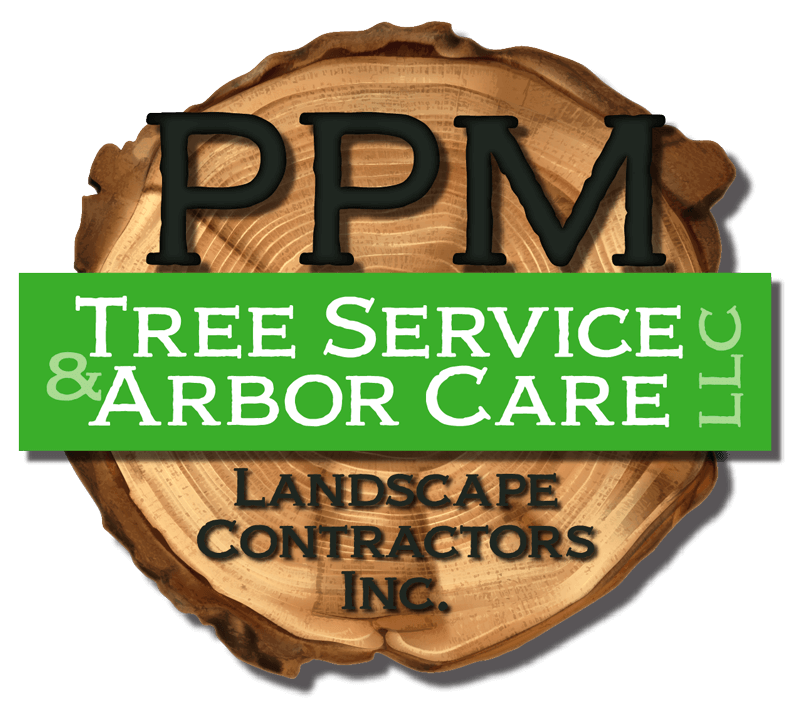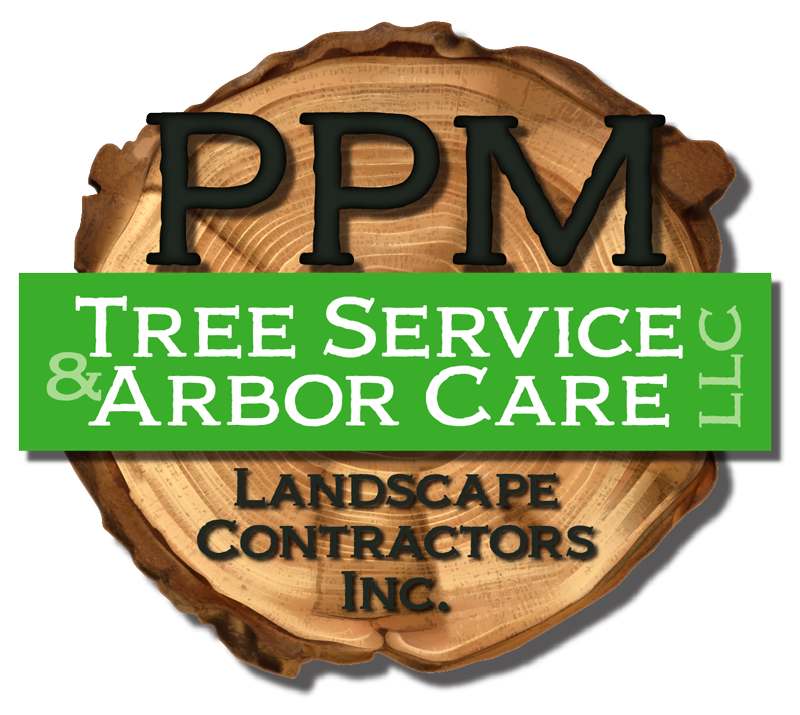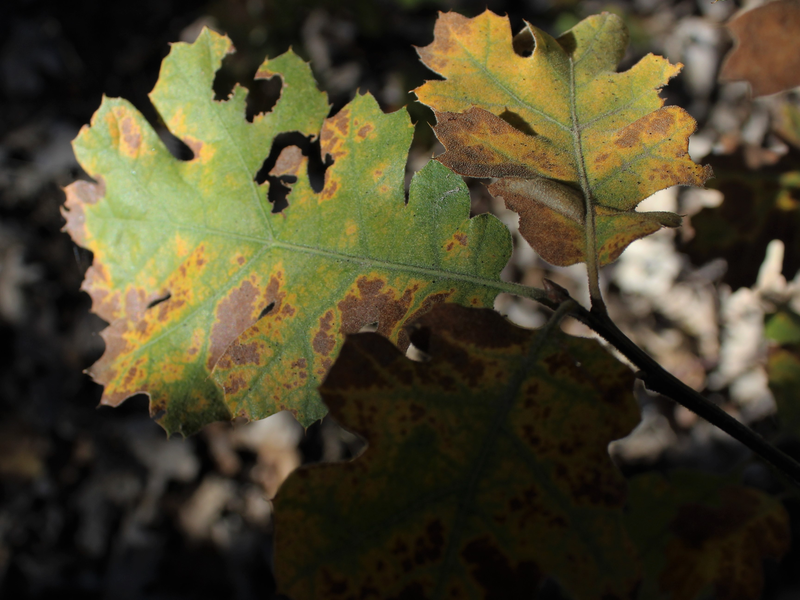5 Common Problems With Michigan Trees In Spring
Ah, spring! The time we Michiganders long for all winter. Spring means the arrival of nicer weather, baseball, blossoming flowers, and greening trees. Unfortunately, late spring is also the time when many tree diseases make their appearance. If a tree becomes too diseased, unfortunately, it will have to be cut down. You should always use a professional tree removal service to avoid damaging your vehicles, property, or harming yourself.
5 Tree Diseases In Michigan
What To Watch Out For This Spring
Leaf Spot
“Leaf spot” is actually a general time for a variety of diseases that impact trees. The main cause of leaf spot is a fungus, though a few strains are bacterial in nature. Generally, leaf spot does not automatically need treatment. However, if the disease is advanced, it can cause the tree to lose its leaves prematurely. Younger trees are more susceptible to the damage caused by leaf spot and are more likely to need replacing outright.
The biggest indicator of leaf spot disease is black spots on the leaves of the infected plants. The size will vary depending on which specific microbe is causing the damage and how advanced the disease is. They can appear as black, but also brown or tan. Over time, the spots may combine to form blotched areas of discoloration.
There are several ways to combat the disease: apply a fungicide, prune the infected branches, replace the tree. If the disease is not as advanced, you can trim infected branches before the spread continues or apply a fungicide. If the tree is completely overtaken, you may need to replace it altogether.
One way to proactively protect your trees is to avoid letting dead branches and leaves sit around in the fall. This is a breeding ground for the organisms that cause leaf spot and other fungal diseases. Since spring in Michigan is often very damp, this wet weather may cause the disease to be splashed or blown onto new trees. If you have smaller ornamental trees and shrubs, be sure that you don’t overwater them with your sprinkler or irrigation system.
Tree Cankers
Tree cankers are the result of a physical injury to the tree. Basically, the tree has a “wound” that has become infected by fungi or bacteria. They can cause an unsightly circular or ovulary shape, and their presence can cause trees to lose branches, lessen structural integrity, or even die. When fungi and bacteria thrive during the wet conditions of spring, they can find their way into parts of a tree that have experienced trauma. For example: if a tree loses a branch during a storm. The open area the branch has broken off is an open gate for microbes to get in and cankers to form.
Symptoms of cankers are an oval-like shape that varies in size. The bark near the canker might leak sap, like a human wound might leak pus. You might even notice a foul odor. If the canker is on a specific branch, as opposed to the main trunk, you may notice leaves on this branch appear smaller and paler in color. This is due to the fungal infection leeching off the tree’s inner moisture.
Cankers can’t be controlled through chemical means. The best thing to do is prune off infected areas and keep up with seasonal pruning to prevent future infestation. If the tree is not recovering properly, you may need to remove it.
Oak Wilt
Oak wilt is rapidly becoming a problem in Michigan. It has been confirmed in 61 Michigan counties. While this may not be a problem for one lone oak in your yard, our forests are about 10% oak, so this disease could possibly infect 149 million red oak trees. Symptoms include leaves that are bronze or brownish, while the leaf base stays green. Like cankers, the oak wilt fungus enters the tree through a wound. Michigan State University has advised against pruning, trimming, or otherwise performing an action that could damage the oak tree from April 15 to July 15 each year. If you suspect your tree is infected, it’s important to contact someone. This disease can spread through insects that pick up the microbes, the root system, or through diseased firewood. Generally, the process to stop the spread is either removing the tree or disrupting the root system, so the infection does not spread to other trees.
Apple Scab
We love our apples here in the Mitten, and so does a fungus is known commonly as “apple scab.” This fungal disease affects both the tree’s fruit and leaves and may render them unfit for eating. You’ll know you’re dealing with apple scab if you see olive-green colored spots on the leaves, about 1/2″ in diameter. The spots have a fringe border and will turn a darker brown or black color with time. Infected fruit will turn brown and look hard and grow in a deformed fashion. This fungus infects not only traditional apples that we put into pies but also crabapple trees as well.
Unfortunately, fungicides aren’t effective against trees that already have scab. They can only prevent future infections in healthy trees. Remove infected trees and focus chemical treatments on protecting the rest of your fruit trees in the future.
Emerald Ash Borer
This invasive species has plagued ash trees in the Great Lakes State for many years. If caught early, chemical treatments are available. However, you may not realize you have a problem until it’s too late. Symptoms of Emerald Ash Borer include dead or dying branches, bark that flakes easily or splits off, visible feeding holes of the beetles that resemble the capital letter “D,” or a thinned-out canopy. This disease is often spread through human action – that’s how it reached the US’s shores from its home in Asia. It’s imperative not to move firewood from one location to another, i.e., don’t buy firewood in metro Detroit and bring it up north to your vacation spot. Be sure to ask your tree disease specialist if you should remove the tree altogether. No one wants to see their beloved tree cut down, but you don’t want to have dying ash fall onto your home, vehicle, or a neighbor’s property.
Find Tree Removal Service Near Livonia, MI
If your tree has been decimated by fungal diseases or the Emerald Ash Borer, the only option may be to remove it. Our experts have the equipment and training at PPM Tree Service & Arbor Care to safely remove dead or dying trees from your property. And we don’t stop there. We also offer stump grinding services, so you’re not left with an unsightly reminder of the old tree. We can also help you choose and install a new plant for your yard. Please call (877) 454-8733 or leave us a message online to learn more about our services. Our expert arborists are standing by to speak to you! For other topics relating to tree care or firewood delivery, be sure to browse our blog page!


